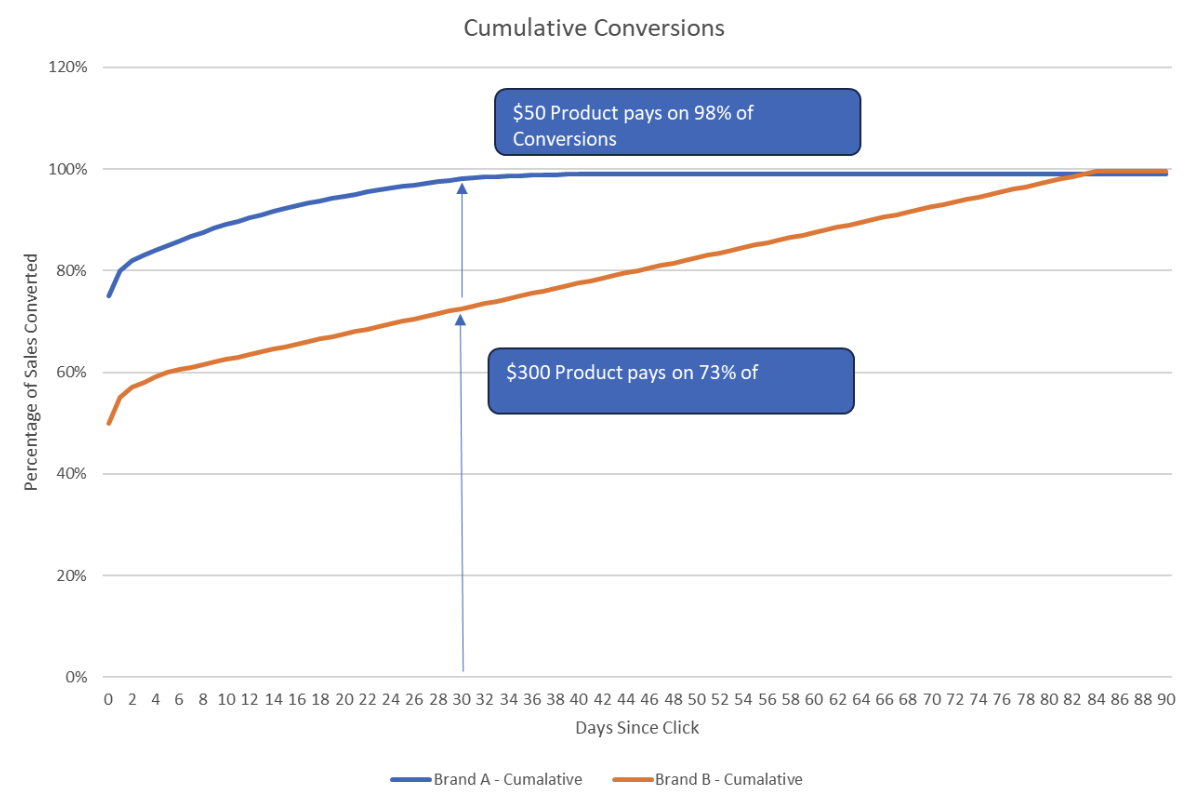Grabbing affiliates’ attention is hard! They have the traffic. They are influencing the buyer. They have the power to determine if the users choose your brand or one of your competitors.
So very often, “rate” or “CPA” is the flag affiliate managers use to wave aggressively in their faces, whether it be at tradeshows, cold out-reach emails, or on the weekly catch-up.
But is “CPA” a metric that affiliates can make decisions on? Most affiliates will justifiably say
“The rate is attractive, but what is your conversion rate?”
And here is where the waters get very very muddy! Because often (good) affiliate managers will usually reply and saw
- Our conversion rate for Google non-brand search traffic is 10%
- Our conversion rate for cold traffic on Meta is 4%
- Our conversion rate for cold email is 1%
This information is helpful, and it gets affiliates closer to estimating their true earning per click and, subsequently, what their margin will be.
But what is never spoken about are three factors that can have a massive influence on the EPC.
These factors are:
- Length of conversion attribution window after the click occurs
- Policy on Attribution Touch Point
- Policy on Brand Bidding from Coupon Partners.
Length of conversion attribution window after the click occurs
Some products take longer to convert than others. Usually, it’s driven by price, but promotional schedule, pop-up strategy, and closeness to Black Friday Cyber Monday, all influence the time-to-conversion metric.
Most programs will pay on a 30-day window, so let’s use that number to illustrate the potential leakage of conversions.
The below graph shows that if a product only closes 73% of the sales within 30 days, the affiliates effectively don’t get paid on 27% of their sales! So on a CPA of $200, already $54 is lost!
Policy on Attribution Touch Point

Affiliate managers need to decide how sales are allocated. Most will go with first-click or last-click. More often than not, the last click is the default. Again, this factor has a significant influence on affiliate earnings, but is not something that is discussed in the negotiations.
Whether there are multiple touch points in the user buying process is influenced by a number of things, but the two main ones are whether there is a coupon code available on-site, of whether additional research is needed from the user.
Is there a coupon code available for the user to use on-site?
If a code is available, it reduces the likelihood of the user abandoning the site, searching for a coupon code, and being re-tagged to another affiliate.
Does the user need to conduct some additional research on the product?
If it’s a more considered purchase, or there are identical products available from competitors, the user will be more likely to search for “Brand+Review” or “Brand+Versus”.
Again, each of these scenarios will result in the user leaving the site, coming back via a review partner, and being re-tagged.
Policy on Brand Bidding from Coupon Partners
If a brand allows coupon partners to bid on brand terms, it’s far more likely that a user will be re-tagged. Not all coupon click-throughs will re-tag a user, but it’s almost certain that a coupon site that is bidding on a brand’s trademark is earning commissions, so re-tagging from these clicks is almost a certainty.
Conclusion
While commission rate is an important aspect in an affiliate’s decision, there are terms and conditions that will dramatically affect how many of the conversions an affiliate initiates are actually awarded to the same affiliate.
Shorter attribution windows, consumers conducting additional research, and the brand’s policy on affiliates bidding on a brand’s terms can all dramatically affect the final earning per click.
It’s worthwhile for affiliates to get clarity on all these items before agreeing to promote a brand.








